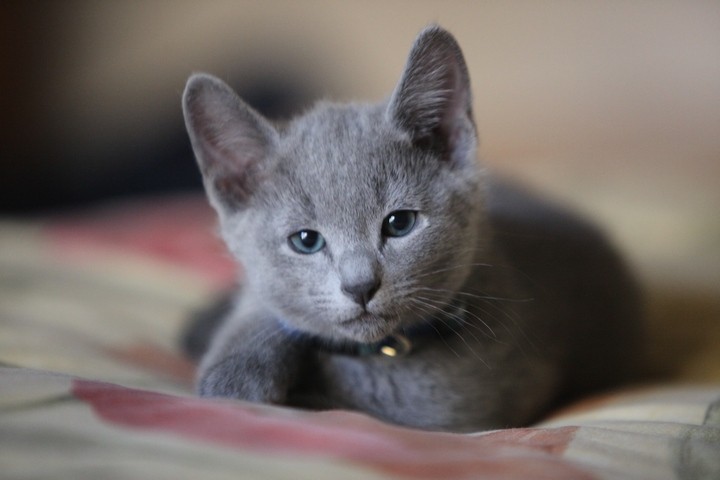Russian Blue cat
(Russian Blue)

Description
The Russian blue is a popular breed of domestic cat known for its striking blue-grey coat and elegant, lithe build. This breed originated in Russia, and its unique appearance and friendly demeanor have made it a beloved pet around the world. In this article, we will explore the history, appearance, temperament, care, and health of the Russian blue cat. History: The exact origins of the Russian blue are unclear, but it is believed to have originated in the port city of Archangel, in northern Russia. It is thought to have been brought to England and Northern Europe in the late 19th century, where it quickly gained popularity as a show cat. During World War II, the breed almost disappeared due to breeding restrictions and a shortage of resources, but it was saved by dedicated breeders who managed to preserve its unique qualities. Appearance: The Russian blue is a medium-sized cat, weighing between 8 and 15 pounds. It has a muscular, athletic build with a long, slender neck and a wedge-shaped head. The most distinctive feature of the Russian blue is its coat, which is short, dense, and plush to the touch. The coat is a striking blue-grey color with silver tipping that shimmers in the light. The eyes of the Russian blue are also a striking feature, being large, almond-shaped, and vivid green. Temperament: The Russian blue is known for its friendly, affectionate nature. It is a very intelligent and curious breed that loves to explore and play. Russian blues are social cats that enjoy the company of their humans and are known to be loyal and devoted pets. They are generally quiet cats that do not meow excessively, and they tend to be well-behaved and easy to train. Russian blues are also known to be excellent hunters, thanks to their agile and athletic nature. Care: The Russian blue is a low-maintenance breed that requires little grooming. Its short, dense coat does not mat or tangle easily, and it sheds very little. Regular brushing with a soft brush or grooming glove will help to remove any loose hair and keep the coat shiny and healthy. Russian blues also require regular dental care, such as brushing or dental chews, to prevent tooth decay and gum disease. Health: Overall, the Russian blue is a healthy breed with a lifespan of 10 to 15 years. However, like all cats, it is prone to certain health conditions, such as hypertrophic cardiomyopathy (a heart condition) and urinary tract issues. Regular checkups with a veterinarian and a healthy diet are essential to keep the Russian blue healthy and happy. Conclusion: The Russian blue is a unique and elegant breed of cat that is beloved by cat lovers around the world. Its distinctive appearance, friendly demeanor, and low-maintenance nature make it an excellent choice for families and individuals looking for a loyal and affectionate pet. With proper care and attention, the Russian blue can bring joy and companionship to its human companions for many years.
Taxonomic tree:







